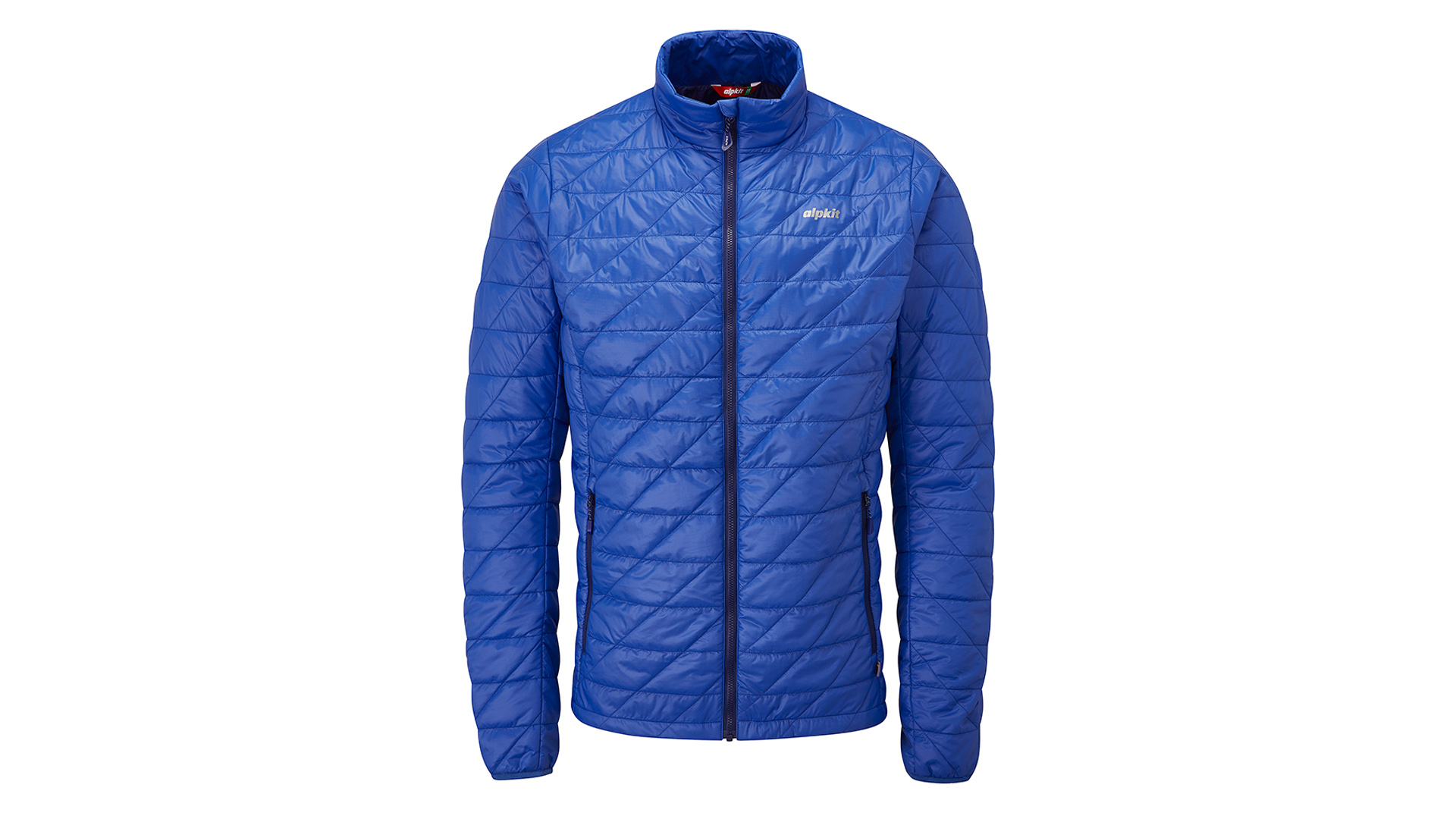Advnture Verdict
Great value, and made with superb attention to environmental considerations, this straight-forward number excels as an unfussy midlayer, or three-season outer. It’s highly packable, and once you’re wearing it, the Alpkit Kanyo is a can-do jacket that just gets on and does its job without shouting about it.
Pros
- +
Simple and effective synthetic layer
- +
Quick-drying, compressible fill that provides warmth even when wet
- +
Eco-friendly recycled fabrics and fill
- +
Extremely lightweight and packable
Cons
- -
Lots of stitching
- -
No hood
- -
Primaloft Silver fill isn’t the warmest synthetic insulation around
You can trust Advnture
First impressions
The Alpkit Kanyo puffer jacket is a synthetic insulated coat of deceptively simple design. The fill is Primaloft Silver Eco, a continuous filament 100% recycled 60gm insulation that is both highly compressible and very durable. It’s easy to look after and will continue to insulate if damp, and even it does get a soaking it dries out quickly. The Kanyo’s face fabric (also made from recycled materials) is fully windproof and water-repellent too, so it blocks breezes effectively whether you’re hillwalking, climbing or camping.
• RRP: £100 (UK)/€114 (EU)
• Fill: 100% recycled 60gm Primaloft Silver Eco
• Sizes (unisex): XS–XXL
• Weight (size M): 315g/14.2oz
• Colours: Tarmac/Fern/Nemo
- We assemble the best down jackets and puffers you can buy
- Whatever you're looking for, we can tell you how to choose a down jacket or puffer
- Down vs synthetic: which is the best fill for you?
In the field
This jacket is refreshingly unfussy and uncomplicated, which is probably what we liked most about it. It’s extremely light and packable, enabling you to take it pretty much anywhere. Then, if you feel chilly, you take it out, put it on, zip it up and guess what? It keeps you warm. Job done. Okay, it doesn’t deliver the same warmth for weight as the very best synthetics or a down fill, but it’s still superior to any fleece, with far less bulk. You’ll want something warmer for winter adventures, but for the rest of the year this jacket is bang on.
There’s no hood, so you’ll need a cosy beanie, but then you’ll probably be carrying one anyway, and that does mean it works even better as a layering piece while also minimising weight and pack size. Other features are relatively simple but functional – an inner zipped chest pocket that doubles as a stuff sack, a hem drawcord and elasticated cuffs to lock in warmth, and two snug zipped hand pockets (though these are a little low down for our liking, as they are obstructed by a climbing harness or a rucksack hipbelt). Handily, when packed up the jacket has an integrated carrying loop, so you can easily clip it to a climbing harness.
For a hundred quid, we still feel it offers terrific value – particularly since it ought to give good service, as the shell and lining are made of hardwearing nylon rather than less durable polyester. The whole package is impressively eco-friendly to boot, which gives a bit of added feel-good factor when purchasing. After all, outdoor kit shouldn’t cost the earth, either literally or metaphorically. The only element that might compromise its lifespan is all that stitching, required to keep the sheet insulation in place, but which in our experience (at least with other layers of similar design) has a tendency to snag and pull. And perhaps we would have liked a little more fill in the collar, but other than that, we can hardly fault it.
An outdoors writer and editor, Matt Jones has been testing kit in the field for nearly a decade. Having worked for both the Ramblers and the Scouts, he knows one or two things about walking and camping, and loves all things adventure, particularly long-distance backpacking, wild camping and climbing mountains – especially in Wales. He’s based in Snowdonia and last year thru-hiked the Cambrian Way, which runs for 298 miles from Cardiff to Conwy, with a total ascent of 73,700 feet – that’s nearly 2½ times the height of Everest. Follow Matt on Instagram and Twitter.


